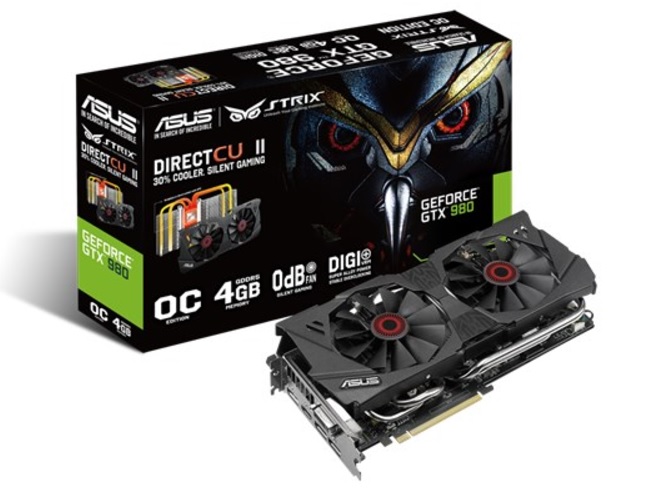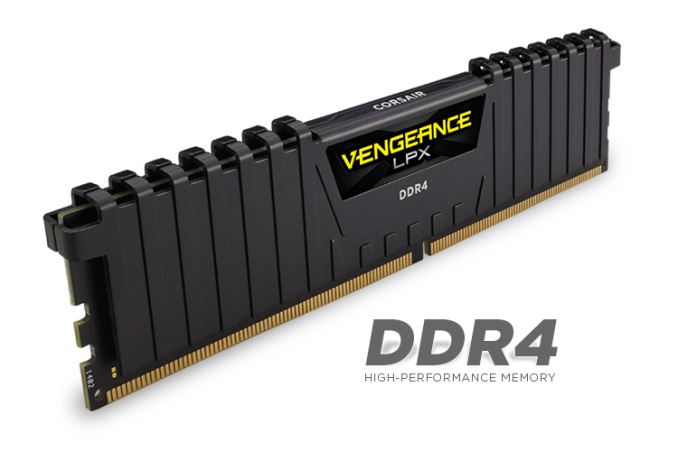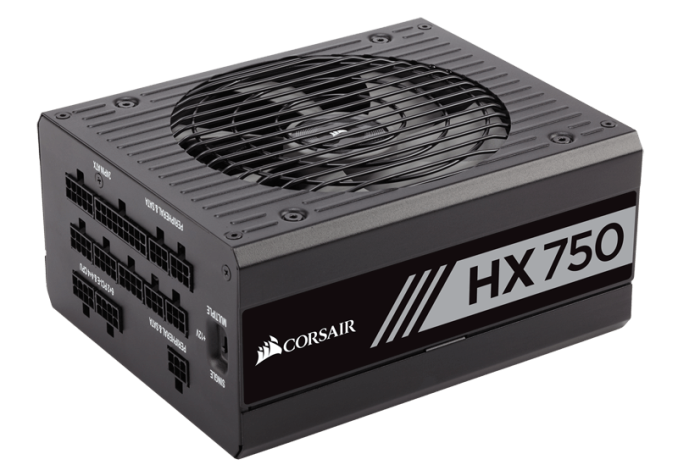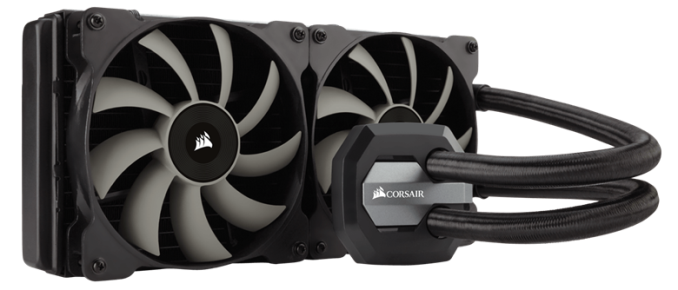The MSI X299 XPower Gaming AC Review: Flagship Fantasy
by Joe Shields on May 9, 2018 8:00 AM EST- Posted in
- Motherboards
- Intel
- MSI
- X299
- Basin Falls
- Skylake-X
- i9-7900X
Board Features
The MSI XPower Gaming AC is MSI's flagship motherboard on the X299 platform. The XPower Gaming AC received a more robust power delivery area using premium Infineon power components. MSI mates this with a dual heat sink to keep the VRM within comfortable operating parameters under load, even with a 165W CPU which is an improvement over their early boards with smaller heatsinks and not as efficient heatsinks.
| MSI X299 XPower Gaming AC | |
| Warranty Period | 3 Years |
| Product Page | Link |
| Price | $440 (Amazon) |
| Size | ATX |
| CPU Interface | LGA2066 |
| Chipset | Intel X299 |
| Memory Slots (DDR4) | Eight DDR4 Quad Channel Supporting 128GB Up to DDR4-4133 (Skylake-X) Up to DDR4-4500 (Kaby Lake-X) |
| Network Connectivity / Wi-Fi | 1 x Intel I219-V GbE 1 x Intel I211 GbE Intel Dual Band Wireless-AC 8265 802.11a/b/g/n/ac, up to 867 Mbps Bluetooth 4.2 |
| Onboard Audio | Realtek ALC1220 |
| PCIe Slots for Graphics (from CPU) | 4 x PCIe 3.0 - 44 Lane CPU: x16/x0/x16/x8 or x8/x8/x16/x8 - 28 Lane CPU: x16/x0/x8/x4 or x8/x8/x8/x4 - 16 Lane CPU: x8/x0/x4/x4 |
| PCIe Slots (from PCH) | 1 x PCIe 3.0 x1 |
| Onboard SATA | 10 x RAID 0/1/5/10 |
| Onboard SATA Express | None |
| Onboard M.2 | 2 x PCIe 3.0 x4 and SATA (chipset) 1 x PCIe 3.0 x4 (CPU) |
| Onboard U.2 | 1 x PCIe 3.0 x4 (chipset) |
| USB 3.1 | ASMedia ASM3142 1 x Type-A Port (back panel) 2 x Type-C (back panel and internal header) |
| USB 3.0 | 6 x Back Panel (ASM1074) 2 x Headers (Chipset) |
| USB 2.0 | 2 x Back Panel 2 x Headers |
| Power Connectors | 1 x 24-pin ATX 1 x 8-pin CPU 1 x 4-pin CPU (optional) |
| Fan Headers | 1 x 4-pin CPU 1 x 4-pin Water Pump 4 x 4-pin System Fans 4 x 4-pin Extend Fans |
| IO Panel | 1 x Clear CMOS 1 x BIOS Flashback+ button 1 x PS/2 Keyboard/mouse combo port 2 x USB 2.0 ports 1 x BIOS Flashback port 2 x Wi-Fi Antenna connectors 6 x USB 3.1 (5 Gbps) ports 2 x LAN (RJ45) ports 1 x USB 3.1 (10 Gbps) Type-A port 1 x USB 3.1 (10 Gbps) Type-C port 1 x Optical S/PDIF OUT connector 5 x OFC audio jacks |
Out of the box, the board is able to run a total of five M.2 drives - three onboard and two with using the M.2 Xpander-Z add-in card. This is the most out of the box we have seen so far. Unique to this board is a larger M.2 heatsink for the top slot that blends in nicely with the chipset heatsink.
RGB implementation is minimal, but enough to give the system a personal touch. To that end, the board also offers 3D Printer support to modify custom print and modify the board. MSI chose to pass on the Killer network parts that we saw on the M7 ACK and instead is using Intel parts all around in the form of two wired GbE ports and Dual Band Wireless. Last, MSI utilizes the premium Realtek ALC1220 codec for audio.
Test Bed
As per our testing policy, we take a high-end CPU suitable for the motherboard that was released during the socket’s initial launch and equip the system with a suitable amount of memory running at the processor maximum supported frequency. This is also typically run at JEDEC sub timings where possible. It is noted that some users are not keen on this policy, stating that sometimes the maximum supported frequency is quite low, or faster memory is available at a similar price, or that the JEDEC speeds can be prohibitive for performance. While these comments make sense, ultimately very few users apply memory profiles (either XMP or other) as they require interaction with the BIOS, and most users will fall back on JEDEC supported speeds - this includes home users as well as industry who might want to shave off a cent or two from the cost or stay within the margins set by the manufacturer. Where possible, we will extend our testing to include faster memory modules either at the same time as the review or a later date.
Readers of our motherboard review section will have noted the trend in modern motherboards to implement a form of MultiCore Enhancement / Acceleration / Turbo (read our report here) on their motherboards. This does several things, including better benchmark results at stock settings (not entirely needed if overclocking is an end-user goal) at the expense of heat and temperature. It also gives, in essence, an automatic overclock which may be against what the user wants. Our testing methodology is ‘out-of-the-box’, with the latest public BIOS installed and XMP enabled, and thus subject to the whims of this feature. It is ultimately up to the motherboard manufacturer to take this risk – and manufacturers taking risks in the setup is something they do on every product (think C-state settings, USB priority, DPC Latency/monitoring priority, overriding memory sub-timings at JEDEC). Processor speed change is part of that risk, and ultimately if no overclocking is planned, some motherboards will affect how fast that shiny new processor goes and can be an important factor in the system build.
| Test Setup | |
| Processor | Intel i9 7900X (10C/20T, 3.3G, 140W) |
| Motherboard | MSI X299 XPower Gaming AC (BIOS v1.50) |
| Cooling | Corsair H115i |
| Power Supply | Corsair HX750 |
| Memory | Corsair Vengeance LPX 4x8GB DDR4 2666 CL16 Corsair Vengeance 4x4GB DDR4 3200 CL16 |
| Memory Settings | DDR4 2666 CL16-18-18-35 2T |
| Video Cards | ASUS Strix GTX 980 |
| Hard Drive | Crucial MX300 1TB |
| Optical Drive | TSST TS-H653G |
| Case | Open Test Bed |
| Operating System | Windows 10 Pro 64-bit |
Many thanks to...
We must thank the following companies for kindly providing hardware for our multiple test beds. Some of this hardware is not in this testbed specifically but is used in other testing.
Thank you to ASUS for providing us with GTX 980 Strix GPUs. At the time of release, the STRIX brand from ASUS was aimed at silent running, or to use the marketing term: '0dB Silent Gaming'. This enables the card to disable the fans when the GPU is dealing with low loads well within temperature specifications. These cards equip the GTX 980 silicon with ASUS' Direct CU II cooler and 10-phase digital VRMs, aimed at high-efficiency conversion. Along with the card, ASUS bundles GPU Tweak software for overclocking and streaming assistance.
The GTX 980 uses NVIDIA's GM204 silicon die, built upon their Maxwell architecture. This die is 5.2 billion transistors for a die size of 298 mm2, built on TMSC's 28nm process. A GTX 980 uses the full GM204 core, with 2048 CUDA Cores and 64 ROPs with a 256-bit memory bus to GDDR5. The official power rating for the GTX 980 is 165W.
The ASUS GTX 980 Strix 4GB (or the full name of STRIX-GTX980-DC2OC-4GD5) runs a reasonable overclock over a reference GTX 980 card, with frequencies in the range of 1178-1279 MHz. The memory runs at stock, in this case, 7010 MHz. Video outputs include three DisplayPort connectors, one HDMI 2.0 connector, and a DVI-I.
Further Reading: AnandTech's NVIDIA GTX 980 Review
Thank you to Crucial for providing us with MX300 SSDs. Crucial stepped up to the plate as our benchmark list grows larger with newer benchmarks and titles, and the 1TB MX300 units are strong performers. Based on Marvell's 88SS1074 controller and using Micron's 384Gbit 32-layer 3D TLC NAND, these are 7mm high, 2.5-inch drives rated for 92K random read IOPS and 530/510 MB/s sequential read and write speeds.
The 1TB models we are using here support TCG Opal 2.0 and IEEE-1667 (eDrive) encryption and have a 360TB rated endurance with a three-year warranty.
Further Reading: AnandTech's Crucial MX300 (750 GB) Review
Thank you to Corsair for providing us with Vengeance LPX DDR4 Memory, HX750 Power Supply, and H115i CPU Cooler.
Corsair kindly sent a 4x8GB DDR4 2666 set of their Vengeance LPX low profile, high-performance memory for our stock testing. The heatsink is made of pure aluminum to help remove heat from the sticks and has an eight-layer PCB. The heatsink is a low profile design to help fit in spaces where there may not be room for a tall heat spreader; think a SFF case or using a large heatsink. Timings on this specific set come in at 16-18-18-35. The Vengeance LPX line supports XMP 2.0 profiles for easily setting the speed and timings. It also comes with a limited lifetime warranty.
Powering the test system is Corsair's HX750 Power Supply. This HX750 is a dual mode unit able to switch from a single 12V rail (62.5A/750W) to a five rail CPU (40A max ea.) and is also fully modular. It has a typical selection of connectors, including dual EPS 4+4 pin four PCIe connectors and a whopping 16 SATA power leads, as well as four 4-pin Molex connectors.
The 135mm fluid dynamic bearing fan remains off until it is 40% loaded offering complete silence in light workloads. The HX750 comes with a ten-year warranty.
In order to cool these high-TDP HEDT CPUs, Corsair sent over its latest and largest AIO in the H115i. This closed-loop system uses a 280mm radiator with 2x140mm SP140L PWM controlled fans. The pump/block combination mounts to all modern CPU sockets. Users are also able to integrate this cooler into the Corsair link software via USB for more control and options.















17 Comments
View All Comments
BPB - Wednesday, May 9, 2018 - link
Sigh, I guess I can always dream about owning such an expensive board. But I can't imagine anybody who is budget conscious or not rich buying one. I wonder how MSI and the others sell enough boards like this to justify making them.Achaios - Wednesday, May 9, 2018 - link
Unfortunately, the era of me dreaming of motherboards and CPU's passed long ago with no signs of returning. Nowadays, the only thing I usually dream of is East Asian fleshpots and lots and lots of ambitious girls in, out, on top and below. Do I miss the time my only interest in the world was my Pentium 4, my NVIDIA GO GPU with 128 megs of RAM and World of Warcraft? Sometimes yes but not really.WinterCharm - Wednesday, May 9, 2018 - link
Hands down the funniest comment I’ve read on here in a long time :)Ket_MANIAC - Wednesday, May 9, 2018 - link
And another great X299 review. Expecting at least a dozen more such reviews and expecting no review for any AM4 boards or X470 boards at all because who buys cheap stuff. Come on guys, is it really that hard? People already blame you guys to being Intel shills and all and reviews such as these only add fuel to their talk. Not that the review is bad but what reason could you have for this megaload of X299 reviews?rsandru - Wednesday, May 9, 2018 - link
Agreed, X299 is going to be replaced soon anyway so even for potential Intel HEDT buyers all those motherboards are most likely non starters... And this one still sports the tiny VRM heat sink that was repeatedly pointed out as being insufficient.To round this perfectly marketed product there’s the ‘gaming’ in the name, as if anyone whose main interest is playing games would pick an X299 platform over a Z370.
Peter2k - Wednesday, May 9, 2018 - link
You'd be surprised how many gamers where absolutely convinced they need quad channel and a bazillion pcie-x lanes for that sweet sweet quad GPU setup they gonna have one day so that they don't throttle when using many M2 SSD'sMarketing must be doing a great job these days
Surprisingly it's the sort of same amount of gamers that don't know that quad GPU setups are dead
Quad channel doesn't do anything for gaming (or most use cases anyway)
Ehh
As long as there are LED's on it
Ket_MANIAC - Thursday, May 10, 2018 - link
What I am baffled about is the lack of AM4 motherboard reviews from AnandTech. They are one of the few publications out here who do motherboard reviews right and just 6 reviews in over a year, out of which 3 are boards that no body ever buys when talking about AM4. Yes, they have covered a lot of Ryzen stuff lately. And motherboard reviews are generally not as important as CPU. But if that's the case, how do you justify "16" X299 reviews? And no X399? I might be coming of as an AMD fanboy, so hold your horses. I am an AMD fan. Not a fanboy. It doesn't take an Einstein to know which among the X299 and AM4 is more important and which among the X299 and X399 is more successful.DanNeely - Thursday, May 10, 2018 - link
Mobo Reviewer A is doing all of the x299 boards in a single giant batch.Mobo Reviewer B is doing all of the AM4 boards in a single giant batch.
The selection of boards they get to review come down to what manufactures send as press samples. There're enough of those to keep all the reviewers busy full time so Anandtech rarely if ever buys retail boards to review.
There currently isn't an active Mobo Reviewer C, so any x399 samples that've been sent in are waiting until A or B clears his current backlog; or one of the other contributors clears out the backlog of what they're currently working on and can step in on mobos again. (eg E. Fylladitakis did a batch of mobos last summer between his keyboard and PSU reviews.)
Ket_MANIAC - Thursday, May 10, 2018 - link
Quite alright but doesn't 16 X299 reviews seem to you as pointless? I don't know if you are representing Anandtech but if you are, don't you think more AM4 stuff would bring more readership to your website? You guys have the power to choose which boards you review among the ones that manufacturers send you and I don't think it is possible that Asus has never sent the Crosshair VI Hero or the VII Hero to you(from the CPU review, I see they had), ASRock never sent the X370 Taichi to you. Wouldn't reviewing these boards make more sense right now considering the 2000 series just launched?PeachNCream - Wednesday, May 9, 2018 - link
It's another X299 MSI motherboard review, because we really need to hear more about MSI products since there are no other vendors out there that produce computer parts.